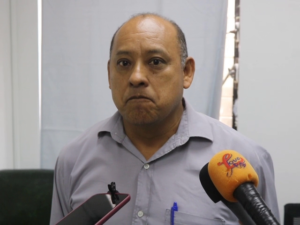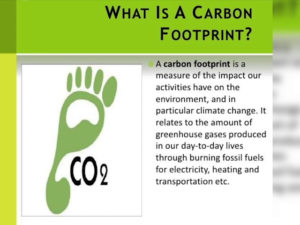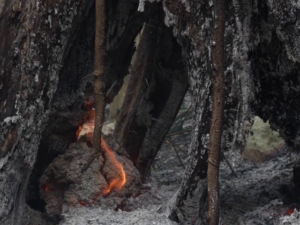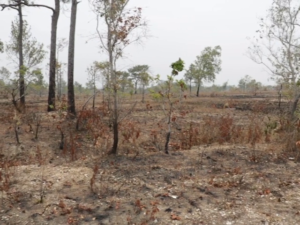Belize Loses Millions of Dollars in Carbon Credit to Wildfires
Across the country, wildfires have been wreaking havoc across thousands of acres of farmland and forests, leading to a loss of millions of dollars in agriculture. Another significant loss is in the loss to the carbon credit market. Carbon credits are a mechanism used to reduce greenhouse gas emissions by creating a market in which companies or governments compensate for their greenhouse gas emissions by investing in projects that reduce, avoid, or remove emissions elsewhere. For years, Belize has been a trailblazer in the carbon offset market, with the Rio Bravo Conservation and Management Area being one of the first carbon offset projects in the world. However, due to the recent fires, the protected area, among others, has suffered a significant loss. Here’s News Five’s Britney Gordon with more details.
Britney Gordon, Reporting
Thousands of acres of land have been lost to the fires that tore across the country over the past several weeks. As the characteristically long dry season ends and the rainy season begins, the government and environmental organizations are assessing the damage, which they estimate is in the millions. Jose Perez, Executive Director of the Association of Protected Areas Management Organizations provided some insight into what those figures look like.

Jose Perez
Jose Perez, Executive Director, APAMO
“The destruction of these pristine forests when you enter a protected area, what you will find is pristine, broadleaf trees, vegetation. And that is what has been burning in mostly Elijio Panti in the Rio Bravo conservation and management area and some protected areas down in the south up to now without the figures. Of those in the south, we estimate that it’s over ten thousand acres of pristine forests that had been burnt and are still burning. In Tapir, if you try to put a figure to the environmental damage and ecological damage at four hundred acres that were burnt earlier this week, it was just emitted about two million dollars. So do the math, for over ten thousand acres.”
One area that has been heavily affected is the Rio Bravo Conservation and Management Area in northwestern Belize. Edilberto Romero, Executive Director of Programme for Belize, which manages the area, told us that while the team has been dealing with fires for several years, it has gotten progressively harder to manage.

Edilberto Romero
Edilberto Romero, Executive Director, Program for Belize
“We’ve been dealing with fires ever since we started. We have seen a shift in 2011 after Hurricane Richard, where the fires have just grown exponentially. Summarily, we used to be able to manage fires with sixteen thousand Belize dollars. Now it’s costing us seventy, eighty thousand Belize dollars to manage fires. And this is because you need to have your fire lines. You need to plan before the fire season. You need to do education. You need to meet with the communities, sensitize the communities, sensitize the fires. You need to compartmentalize your area. And that’s a lot of heavy equipment work. And then when you have to be actively monitoring using different ways of monitoring.”
Since this climate shift in 2011, fires are more frequent and becoming more difficult for the team to manage. The Rio Bravo Area has lost over three thousand acres from fires just this year alone.
 Edilberto Romero
Edilberto Romero
“We’ve lost approximately three thousand acres this year in eight fires. It’s a lot, but it’s eight fires. This is since the season in February. Since the fire season up to last weekend where we detected a fire in Friday and by Sunday morning that had been outed. But if we would not have been prepared, one fire would have been two thousand, three thousand acres if we didn’t do the work the timely response and put the resources in it.”

The vast wilderness in Orange Walk District was among the first of seven protected areas in the world to join the carbon offset market, making Belize a world leader in the movement. However, with these losses, the reserve has lost millions of dollars in potential revenue, as the area affected was at the final stages of preparation before it was to be traded for carbon credits. Carbon credits are used by cooperations and government entities to allow them to emit a set amount of carbon into the atmosphere. By purchasing a credit, the emission is offset by the preservation of a forest reserve.
 Edilberto Romero
Edilberto Romero
“You cannot generalize because every type of forest has different amount of carbon that they store. But if you use an average figure, it’s like one hundred fifty, two hundred tons of carbon per acre that you may be able to claim from carbon credits. Having one ton of carbon as one credit. Those credit have different prices depending on the market, you sell it the lowest. For us, It has not been lower than ten dollars but if you put that lowest figure you’re talking about millions of dollars that’s been lost. In our 2011 fire, we were talking one point six million tons of co2 equivalent and if you put that at ten dollars then you’re talking about sixteen million dollars.”
Romero attributes the difficulty with managing the fires to the low funding NGOs receive and the hoops that they must jump through to receive assistance.
 Edilberto Romero
Edilberto Romero
“The problem with fires is that NGOs, I’m talking about protected areas here, NGOs do not have money to deal with those fires. And for you to control the fire, you have to have quick response. You have personnel, but that’s not sufficient for large fires. You need heavy equipment and other things. And if you don’t have the monies for that, then you try to figure out where to get it. And by the time you get confirmation, two days have passed, three days, the fire is now huge. It becomes more, more expensive.”
He recommends that a contingency plan be set in place so that protected areas like the Rio Bravo can have the capacity to counteract and respond to fires before it gets too late, and millions of dollars in carbon credit are reduced to ash.
 Edilberto Romero
Edilberto Romero
“My recommendation is at a country level, we, for Rio Bravo, we have contingency of ten thousand to quickly respond as soon as possible. But for the country, all protected areas now should have a fire contingency fund and their plan. For the country, we need to look at Belize as the entire country under fire threat and we need to put a contingency fund that is there ready to respond that you don’t have to get no kind of clearance because if you take one day to get approval, that’s a lot. If you take three days, that’s too much, much less a week and then it becomes more risky and it becomes problematic to the health of the people and everything that comes along. And then you have more expense having to support the community’s damage, the farmer’s damage and everything.”
Britney Gordon for News Five.







Facebook Comments